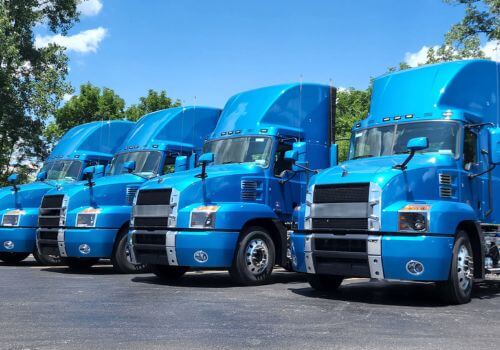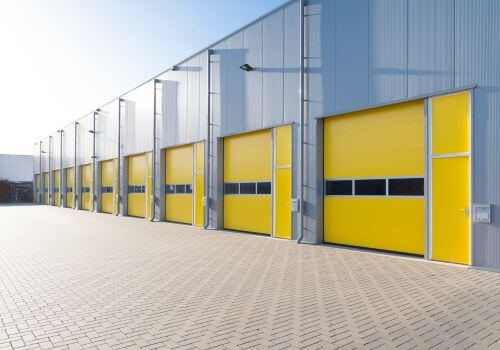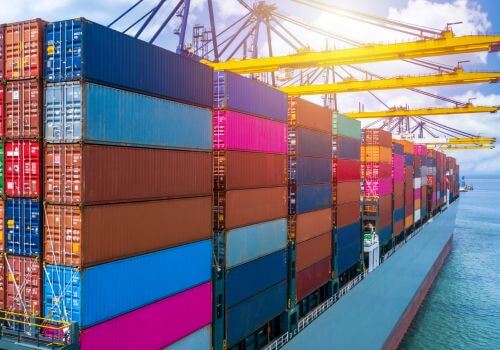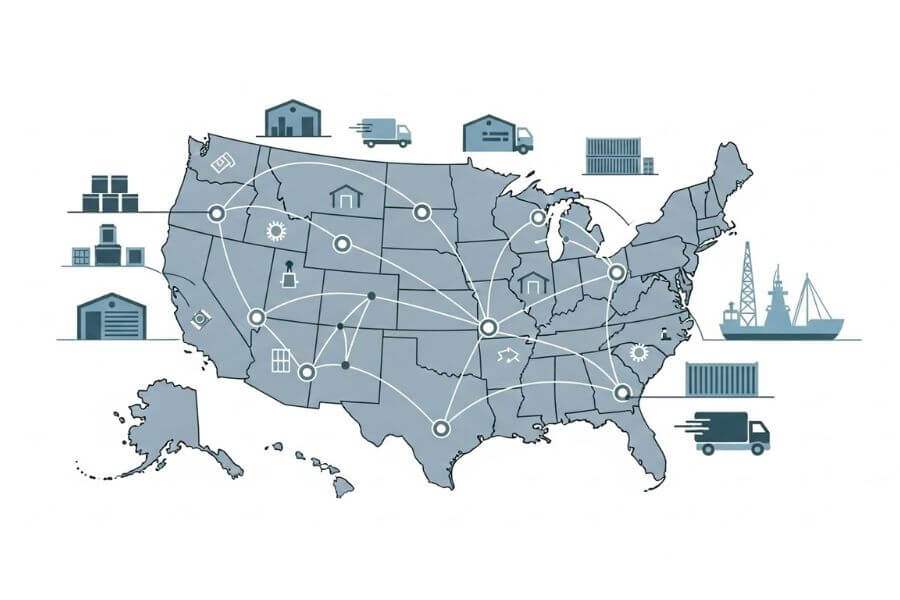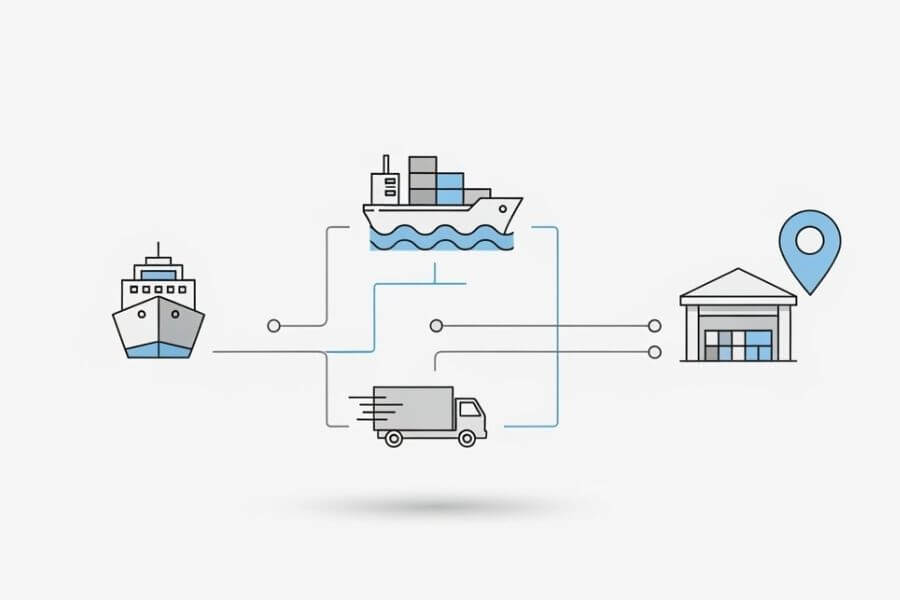In the ever-evolving landscape of logistics and transportation, one term that frequently comes up is “Less Than Truckload” or LTL shipping. LTL is a critical component of modern supply chains, allowing businesses to efficiently move smaller quantities of freight without the need for full truckload shipments.
In this comprehensive guide, we will explore the ins and outs of LTL shipping, from its definition and benefits to its challenges and best practices.
What is Less Than Truckload (LTL) Shipping?
Less-Than-Truckload (LTL) shipping is a logistics and transportation strategy that involves the shipment of goods that do not fill an entire truckload. Unlike Full Truckload (FTL) shipments, where a single customer’s cargo occupies an entire truck, LTL shipments combine goods from multiple shippers on the same truck. The idea is to maximize the use of truck space and reduce transportation costs for businesses with smaller shipping needs.

What are the Benefits of LTL Shipping?
Less-Than-Truckload shipping offers numerous benefits for businesses of all sizes and industries. This logistics and transportation strategy is particularly advantageous when it comes to efficiently moving smaller quantities of cargo.
Let’s explore some of the key benefits that LTL shipping brings to the table:
Cost Efficiency
LTL shipping is a cost-effective solution that offers significant savings for businesses. By sharing the cost of transportation with other shippers, companies can reduce their shipping expenses substantially. Instead of paying for an entire truckload, shippers only pay for the space and weight their cargo occupies within the truck. This makes it an economical choice for businesses with shipments that fall between the capacities of parcel carriers and full truckloads, ensuring they don’t overspend on shipping costs.
Flexibility and Scalability
LTL shipping provides businesses with unparalleled flexibility and scalability. Whether you’re shipping a few pallets or a few skids, LTL adapts to your needs without the constraints of Full Truckload (LTL) shipping. This flexibility is particularly beneficial for companies with fluctuating shipping volumes due to seasonal demand, enabling them to adjust their shipping capacity as needed to optimize costs.
Reduced Carbon Footprint
An often-overlooked advantage of LTL shipping is its positive impact on the environment. By consolidating shipments from multiple shippers onto a single truck, LTL reduces the number of trucks on the road. This, in turn, leads to lower fuel consumption and decreased greenhouse gas emissions, making it an environmentally friendly choice for conscientious businesses.
Reduced Risk of Cargo Damage
LTL carriers prioritize cargo safety through careful handling. They employ specialized equipment, such as liftgates and pallet jacks, to ensure safe loading and unloading processes. Frequent inspections at terminals also reduce the likelihood of damage during transit, providing shippers with peace of mind.
Summary:
In essence, Less Than Truckload (LTL) shipping is a versatile and cost-effective transportation solution that offers numerous benefits, including cost savings, environmental sustainability, flexibility, and cargo safety. These advantages make it a valuable option for businesses with smaller shipping needs, allowing them to optimize their supply chains and provide efficient and reliable shipping services to their customers.
What are Some of the Challenges in LTL?
While LTL shipping offers numerous benefits, it also comes with its fair share of challenges. Let’s take a look at the 5 most common obstacles in the LTL shipping process.
Freight Damage or Loss
One of the primary challenges in LTL shipping is the increased risk of freight damage or loss. The process of consolidating shipments from multiple shippers into a single truck can be complex. Different cargo types, varied packaging methods, and diverse handling requirements make it challenging to ensure that all items are loaded, transported, and unloaded without incident. Shippers must carefully consider the potential for damage or loss and take appropriate precautions to safeguard their shipments. Additionally, understanding liability limits imposed by carriers is crucial for managing these risks effectively.
Transit Time Variability
LTL shipments often involve multiple stops for pickups and deliveries along the transportation route. While this allows for cost-effective sharing of truck space, it can introduce variability in transit times. Unlike dedicated truckloads with more predictable schedules, LTL shipments may experience delays due to the need to accommodate various stops along the way. This variability can pose challenges for businesses with strict delivery schedules or time-sensitive shipments.
Pricing Complexity
LTL pricing is based on a freight class system that assigns rates based on various factors, including cargo density, stowability, handling requirements, and liability. The complexity of determining the correct freight class for cargo can be daunting, and shippers may require expertise to navigate this aspect effectively. Furthermore, LTL shipments may incur additional charges, known as accessories, for services such as liftgate delivery, inside delivery, residential delivery, and storage fees. Managing these factors accurately is essential for controlling shipping costs and budgeting effectively.
Limited Capacity
While LTL shipping is well-suited for smaller shipments, it has inherent capacity constraints. LTL carriers have a finite amount of space on each truck, and during peak seasons or periods of high demand, securing LTL capacity can be a challenge. Businesses with larger shipments may find it difficult to secure the necessary space when they need it, potentially leading to delays or increased costs associated with FTL shipping alternatives.
Cargo Tracking and Communication
Tracking LTL shipments can be challenging due to the frequent stops and handling involved in the process. While LTL carriers offer tracking and visibility tools, maintaining accurate tracking and effective communication with carriers is essential. It allows shippers to promptly address any issues that may arise during transit, ensuring that shipments reach their destinations in a timely manner.
Summary:
In essence, Less Than Truckload (LTL) shipping presents several complex challenges that shippers must navigate to ensure the safe and efficient transportation of goods. These challenges include managing the risk of freight damage or loss, addressing transit time variability, understanding pricing complexities, dealing with limited capacity, and tracking shipments. Successfully overcoming these challenges requires careful planning, proactive communication with carriers, and a thorough understanding of the nuances of LTL shipping.
5 Best Practices for Successful LTL Shipments
Successful less-than-truckload shipping is a combination of precision, preparation, and efficient practices. To optimize your LTL shipping operations, it’s essential to follow best practices that encompass accurate measurement, secure packaging, selecting the right carrier, and leveraging technology.
In this section, we will delve into these best practices in greater detail to help you navigate the complexities of LTL shipping while ensuring cost-effectiveness, cargo safety, and customer satisfaction.
1. Accurate Weight and Dimensions
Accurate measurement and documentation of the weight and dimensions of your LTL shipments are fundamental to successful shipping. Shippers should invest in precise weighing and measuring equipment to ensure that the provided information is reliable. Inaccurate data can lead to billing adjustments, shipment delays, and potential disputes with carriers. By consistently providing precise weight and dimensions, you can streamline the shipping process and prevent costly errors.
2. Efficient Packaging
Proper packaging plays a crucial role in minimizing the risk of damage during LTL shipping. Use sturdy and durable materials and secure your cargo effectively to pallets. Ensure that fragile items are adequately cushioned with appropriate packaging materials like bubble wrap or foam. Additionally, label your shipments clearly with information about their contents and handling instructions. Effective packaging not only protects your goods but also facilitates smoother handling and transit.
3. Use Reputable Carrier or 3PL
Choosing the right LTL carrier is a pivotal decision for successful shipping. Conduct thorough research to identify carriers with strong track records for reliability, on-time deliveries, and low damage rates. Consider factors such as the carrier’s service coverage, transit times, and pricing structure. Additionally, seek customer reviews and references to gain insight into the carrier’s performance and customer satisfaction. Partnering with a reputable carrier can enhance the overall quality of your LTL shipping.
4. Consolidate Shipments
Whenever possible, consolidate multiple shipments into one LTL load to maximize cost savings and reduce the environmental impact. By grouping shipments heading in the same direction or to similar destinations, you can optimize truck space utilization and minimize the number of trucks on the road. Consolidation not only reduces transportation costs but also aligns with sustainability goals by reducing fuel consumption and emissions.
5. Leverage Technology
Embrace technology to streamline your LTL shipping operations. Implement a Transportation Management System (TMS) or logistics software to help manage and optimize your shipments. These tools provide real-time visibility into your supply chain, allowing you to track shipments, monitor carrier performance, and efficiently manage shipping documentation. Utilize online portals and digital communication channels with carriers to facilitate smoother coordination and resolve issues promptly.
6. Monitor Shipments in Real-Time
Take advantage of tracking and visibility tools provided by the LTL carriers. Real-time shipment monitoring allows you to keep tabs on your cargo’s status and location throughout its journey and this visibility enables proactive problem-solving and timely customer communication, enhancing customer satisfaction and supply chain efficiency.
7. Communicate Effectively with Carriers
Open and effective communication with LTL carriers is key to successful shipping. Maintain clear lines of communication to address any questions, concerns, or special requirements related to your shipments. Promptly report any discrepancies or issues that arise during transit. Also, building a strong partnership with carriers fosters trust and collaboration, which can lead to smoother and more reliable shipping experiences.
8. Implement Efficient Shipping Practices
Streamline your shipping practices by optimizing load planning, order processing, and shipment scheduling. By consolidating orders and shipments based on factors like destination proximity, you can minimize unnecessary stops and handling. Implement efficient practices for dock operations, including swift loading and unloading processes, to reduce dwell times at terminals and improve overall transit times.
Summary:
In essence, successful LTL shipping relies on a combination of precision, preparation, technology adoption, and effective communication. By ensuring accurate weight and dimensions, efficient packaging, and selecting reputable carriers, businesses can enhance the quality of their shipments while controlling costs. Additionally, leveraging technology, real-time monitoring, and proactive communication with carriers are vital for maintaining visibility and addressing any challenges that may arise during transit. Efficient shipping practices and consolidation strategies further contribute to the overall success of LTL shipping operations.
Top 10 Factors that Determine the Cost of an LTL Shipment
The cost of a less-than-truckload (LTL) shipment is influenced by several factors, each playing a crucial role in determining the final price. Understanding these factors is essential for accurate budgeting and cost control in LTL shipping.
Here are some of the key factors that determine LTL shipment cost:
1. Freight Class
- Cargo Classification: The National Motor Freight Classification (NMFC) system assigns a freight class to each type of cargo based on factors such as density, stowability, handling requirements, and liability. The freight class indicates the shipment’s relative transportability and risk. Lower-class cargo generally incurs lower shipping rates, while higher-class cargo commands higher rates. Accurate classification is vital for proper rate calculation.
2. Weight and Dimensions
- Actual Weight: The actual weight of the shipment is a primary cost determinant. Carriers charge based on the weight of the cargo, typically measured in pounds or kilograms. Accurate weight measurement is crucial, as discrepancies can result in billing adjustments.
- Volume or Cubic Feet: The amount of space your cargo occupies within the truck, referred to as cubic feet or volume, is another consideration. Carriers may use a formula to calculate dimensional weight (DIM weight) if the shipment is unusually large or lightweight. DIM weight can impact the shipping cost.
3. Distance
- Mileage: The distance between the origin and destination points is a significant cost factor. Longer distances generally result in higher shipping costs. Carriers use mileage-based pricing to calculate rates, with specific rates per mile or per hundredweight
4. Accessorials
- Additional Services: Accessorials are supplementary services provided by carriers, such as liftgate service, inside delivery, residential delivery, and notification services. These services come at an extra cost and can significantly impact the total shipping expense. Shippers should be aware of which accessorial services are necessary and plan accordingly.
5. Fuel Surcharges
- Fuel Costs: Carriers may impose fuel surcharges to account for fluctuations in fuel prices. These surcharges are typically tied to changes in diesel fuel prices and can vary over time. Monitoring fuel surcharges is essential for understanding the total shipping cost.
6. Freight All Kinds (FAK)
- Negotiated Rates: Some shippers negotiate FAK rates with carriers. FAK allows for multiple commodities with different freight classes to be shipped together under a single classification for rate calculation. Negotiated rates can offer cost advantages but require careful agreement and documentation.
7. Carrier Selection
- Carrier-Specific Pricing: Different carriers may offer varying pricing structures and discounts based on their network, capacity, and service quality. Shippers should consider carrier options and negotiate rates that align with their shipping needs and budget.
8. Density and Palletization
- Cargo Density: Cargo density, measured in pounds per cubic foot, can affect the shipping cost. Higher-density cargo occupies less space and may be more cost-effective to ship.
- Palletization: Proper palletization of shipments can help maximize space utilization and reduce costs. Shippers can also consider stacking methods, stacking configurations, and the use of pallets or skids to optimize cargo layout.
9. Freight Class Changes
- Freight Class Updates: Periodic updates to the NMFC can alter the classification of certain commodities, potentially impacting shipping costs. Shippers should stay informed about these changes and adjust their shipping strategies accordingly.
10. Seasonal Demand and Capacity
- Seasonal Factors: Peak shipping seasons can influence pricing due to increased demand and limited capacity. Rates may rise during busy periods, so shippers should plan accordingly and explore alternative shipping options when necessary.
Summary:
In essence, the cost of an LTL shipment depends on a range of factors, including cargo classification, weight, dimensions, distance, accessorials, fuel surcharges, negotiated rates, carrier selection, cargo density, and seasonal demand. Shippers should carefully consider each of these factors when calculating and managing their LTL shipping costs to ensure precise budgeting and cost-effective transportation of their goods.
Conclusion
Less Than Truckload (LTL) shipping is a vital component of modern supply chains, offering businesses cost-effective and flexible shipping solutions for smaller quantities of cargo. While it comes with its own set of challenges, understanding the intricacies of LTL shipping and implementing best practices can help companies leverage its advantages effectively. By doing so, businesses can optimize their logistics operations, save costs, and meet customer demands efficiently in today’s competitive marketplace.
LTL Shipping FAQs
These FAQs provide insights into various aspects of FIFO, highlighting its importance and providing insights into the steps and challenges associated with its adoption in the logistics industry.
When should I choose LTL shipping over other shipping methods?
LTL shipping is preferable when your shipment is smaller than a full truckload but larger than what parcel carriers can efficiently handle. It becomes a cost-effective choice for smaller quantities, offers flexibility, and contributes to eco-friendliness due to shared truck space.
How do I determine the freight class of my shipment?
Freight class is determined by the National Motor Freight Classification (NMFC) system based on cargo characteristics. You can find the appropriate class by referring to NMFC guidelines or consulting with carriers, ensuring accurate classification for rate calculation.
What is dimensional weight (DIM weight), and how does it impact LTL shipping costs?
Dimensional weight, or DIM weight, is a calculation used when cargo is lightweight but occupies a significant volume of space. If DIM weight exceeds the actual weight, it can affect shipping costs. It’s calculated based on the shipment’s volume.
Are there any restrictions on the types of cargo that can be shipped using LTL services?
LTL carriers have guidelines and restrictions on certain cargo types. Some materials, especially hazardous goods, oversized items, or extremely fragile items, may have limitations or require special handling. Ensure compliance with carrier guidelines when shipping such cargo.
What are some key considerations when shipping LTL internationally or across borders?
When shipping LTL internationally or across borders, it’s crucial to consider customs compliance, tariffs and trade agreements, restricted items, proper packaging and labeling, accurate documentation, Incoterms, shipping insurance, carrier selection, currency exchange, and tracking and visibility. These considerations help ensure a smooth and compliant cross-border LTL shipping process.
What documentation is required for LTL shipments, and how can I ensure its accuracy?
Several essential documents are required for LTL shipments, including the Bill of Lading (BOL), shipping labels, commercial invoices (for international shipments), certificates of origin (if necessary), and hazardous materials documentation (for hazardous goods). To ensure accuracy, double-check all information, maintain consistency across documents, use legible handwriting or printing, and seek guidance from experts or carriers for accuracy.
Are there any insurance options available to protect my cargo during LTL shipping?
Yes, insurance options are available to protect your cargo during LTL shipping. Cargo insurance offers coverage against loss or damage during transit, while valuation coverage provided by some carriers offers limited protection. Shippers’ interest insurance is a customizable option that provides flexibility and control over coverage. Assess your cargo’s value and consult with an insurance provider to choose the most suitable coverage option.
What role does palletization play in optimizing LTL shipments?
Palletization is vital in optimizing LTL shipments. It allows for efficient space utilization within the trailer, reduces handling-related damage, provides cargo protection, and simplifies cargo identification. When palletizing, you should use proper sizes and materials for pallets, ensure even weight distribution, secure cargo to pallets, and label pallets clearly. Palletization enhances shipment efficiency and safety while minimizing damage risks during LTL transit.




